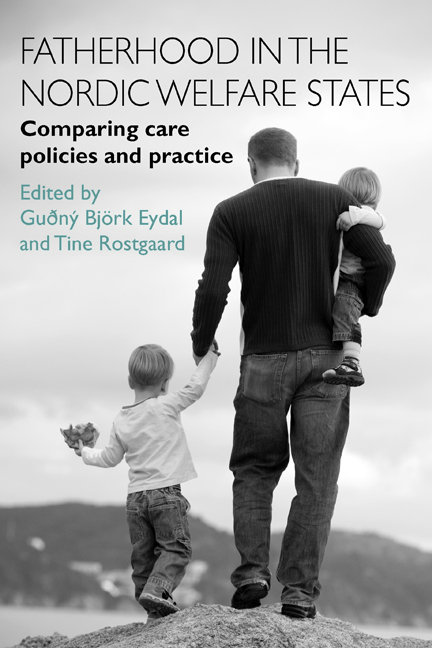Book contents
- Frontmatter
- Contents
- List of tables and figures
- Notes on contributors
- Acknowledgements
- one Introduction
- Theme 1 Fathers, families and family policies
- Theme 2 Fathers in everyday life – culture, work and care
- Theme 3 Constructing fatherhood in different family settings
- Theme 4 Caring fathers and paid parental leave policies
- Theme 5 International reflections on findings
- Conclusions
- Index
five - Time use of Finnish fathers – do institutions matter?
Published online by Cambridge University Press: 04 March 2022
- Frontmatter
- Contents
- List of tables and figures
- Notes on contributors
- Acknowledgements
- one Introduction
- Theme 1 Fathers, families and family policies
- Theme 2 Fathers in everyday life – culture, work and care
- Theme 3 Constructing fatherhood in different family settings
- Theme 4 Caring fathers and paid parental leave policies
- Theme 5 International reflections on findings
- Conclusions
- Index
Summary
Introduction
In this chapter, Finnish fatherhood is approached from the time use perspective. How individuals ‒ and fathers ‒ use their time reflects both the prevailing social norms and the impact of social policies (Sullivan et al, 2009). Paid and domestic work ‒ and especially the time spent on childcare by Finnish fathers from the late 1980s until 2010 ‒ is investigated. Within this time period, several policies attempting to promote gender equality in various aspects of work and family life have been implemented, such as the so-called father's quota and parental leave policies (see also Chapter Fourteen, this volume). Through such law reforms, fathers have been encouraged to take more responsibility for childcare (Haataja, 2009). At the same time, the idea of fatherhood has changed dramatically, and fathers are expected to be much more involved and to take more responsibility for the care work in the family than ever before.
In Finland, the tendency of strengthening fatherhood evolved as early as the 1970s, when the ‘involved fathers’ started participating in household chores, breaking the traditional paternal hegemonic (Huttunen, 1999). Since then, major changes have taken place in the labour markets as well as in the private sphere of family lives. The reasons for these changes are manifold. On the one hand, it can be argued that the family policies actively aiming to increase gender equality have played a central role. On the other hand, attitudinal changes which either precede or are a result of the policy changes should not be overlooked. According to Ylikännö (2009, p 127), instead of wishing for more time for fixing cars or doing other odd jobs around the house, as was still the case as recently as the late-1980s, Finnish fathers now prefer spending more time with their children instead.
Time use studies can indicate the effectiveness of family policies with regard to the daily lives of families and the division of labour between mothers and fathers. Previous comparative studies show that the Scandinavian approach to gender and family policy has been rather successful in terms of obtaining the gender equality objectives, as demonstrated by the more gender-equal division of time use than in countries representing other welfare regimes (Pacholok and Gauthier, 2004; Gornick and Meyers, 2005; Gálvez-Munos et al, 2011).
- Type
- Chapter
- Information
- Fatherhood in the Nordic Welfare StatesComparing Care Policies and Practice, pp. 103 - 120Publisher: Bristol University PressPrint publication year: 2014
- 1
- Cited by



